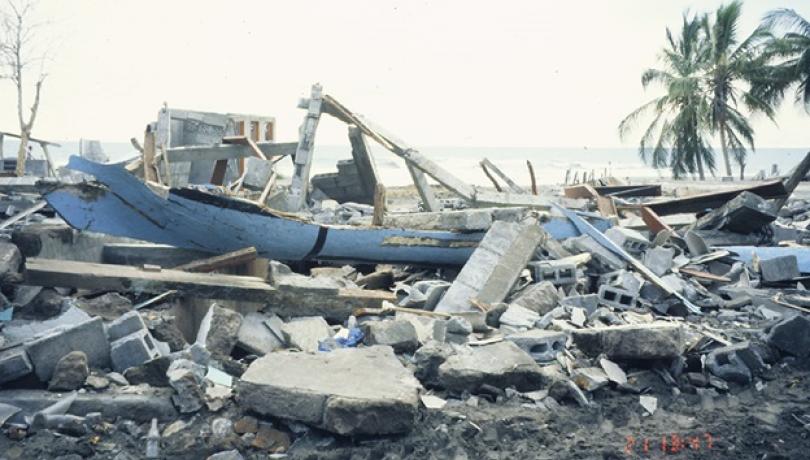The new methodology, which will help improve tsunami monitoring and warning systems, has been used to explain the unknown causes of the tsunami generated by the 1992 Nicaragua earthquake.

The earthquake’s magnitude and location are often good indicators of their potential to generate tsunamis. However, there is a particular type of earthquakes known as tsunami earthquakes which, despite their moderate magnitude, cause destructive tsunamis. This is because they are usually weakly felt and perceived and, therefore, the tsunamis originate and hit the coast unexpectedly.
This is the case of the 1992 Nicaragua earthquake, which triggered a 5-10 m-high tsunami that swept the Nicaraguan coast killing about 170 people and leaving more than 13,500 homeless.
Until now, no model has allowed explaining the reasons why such events occur and cause disproportionately large tsunamis. A new study, led by the Institut de Ciències del Mar (ICM) of Barcelona and published in Science Advances, has revealed the physical mechanism that produces these earthquakes, the origin of their unique characteristics, and the cause of the tsunamis.
In this work, the researcher team has used a conceptual model previously developed by two of the authors of the study, which led them to win the Ciutat de Barcelona 2020 Award. In particular, the experts have demonstrated that all the characteristics of tsunami earthquakes can be explained, predicted and quantified by applying this methodology.
Aside from the strong tsunami potential, the anomalous characteristics of this type of event include a near-surface location, a long duration and slow propagation of the seismic rupture, and weak to moderate ground shaking.
"The key lies on accurately estimating the elastic property variations of the rocks surrounding the fault at the depth where the seismic rupture takes place, and for this it is necessary to use seismic records and apply advanced tomography techniques", explains Valentí Sallarès, ICM researcher and lead author of the study.
According to Sallarès, "apart from showing that the Nicaragua earthquake, in particular, and tsunami earthquakes, in general, are not anomalous events, but are governed by the same physical principles and rupture mechanisms as conventional earthquakes, this work demonstrates that all the particular characteristics of tsunami earthquakes are intrinsic and inherent properties of shallow earthquake ruptures that are causally related".
These findings open the door to combining some of the above characteristics, such as shaking intensity and duration, to improve tsunami monitoring and warning systems on a global scale, including the area of the Gulf of Cadiz and the western Mediterranean, where there is a historical record of devastating earthquakes and tsunamis.